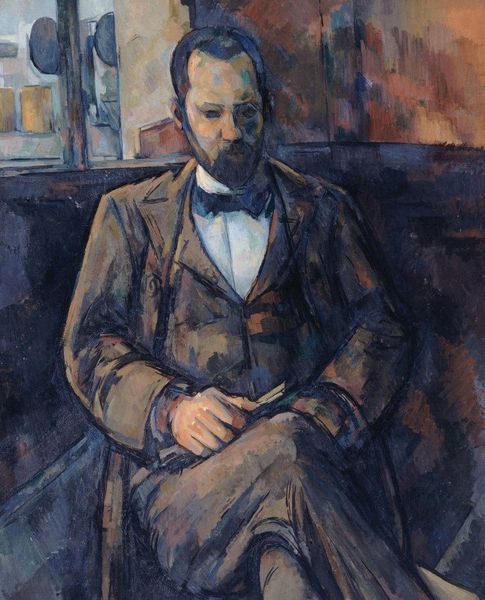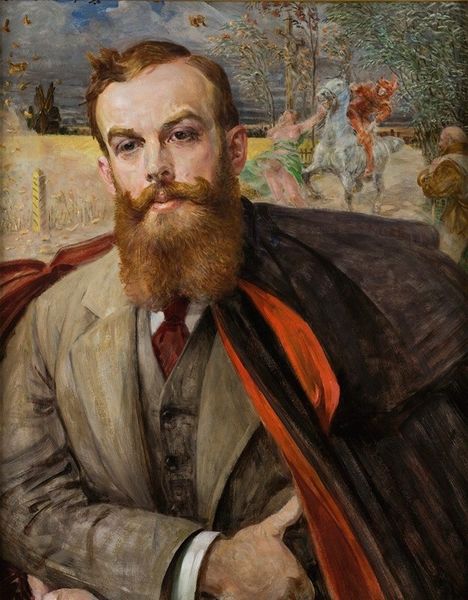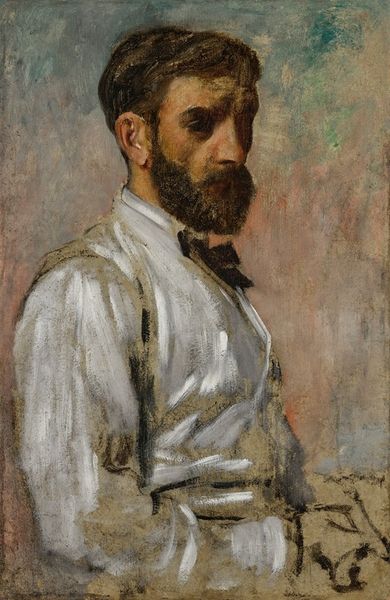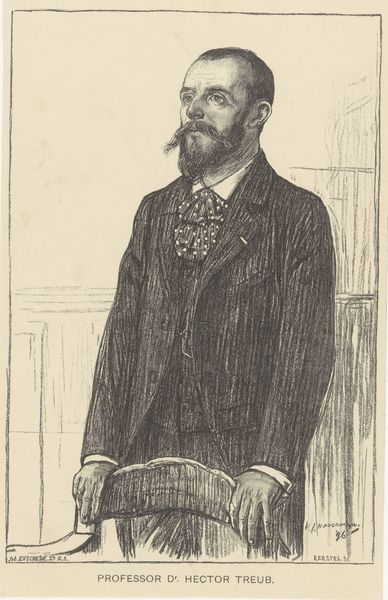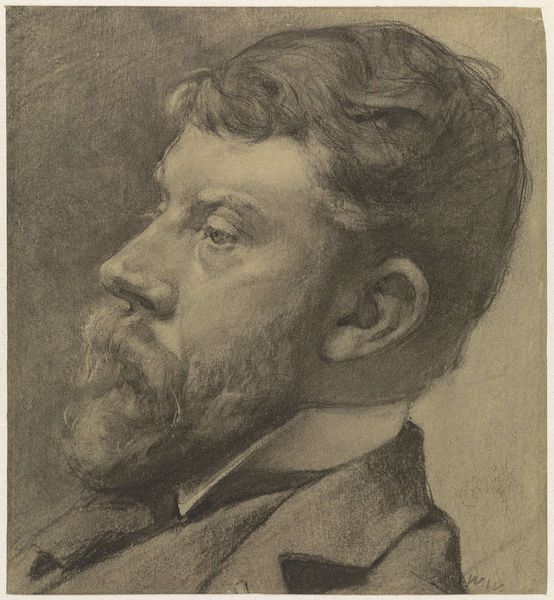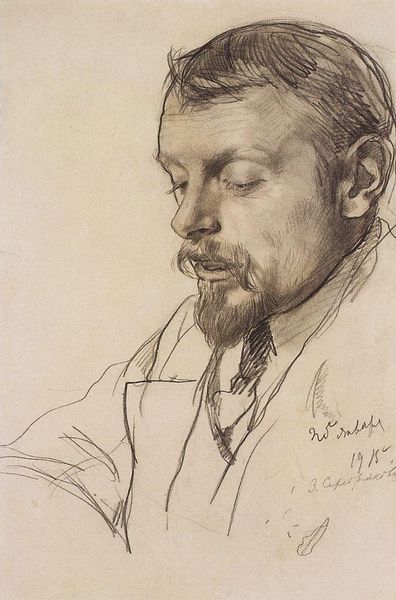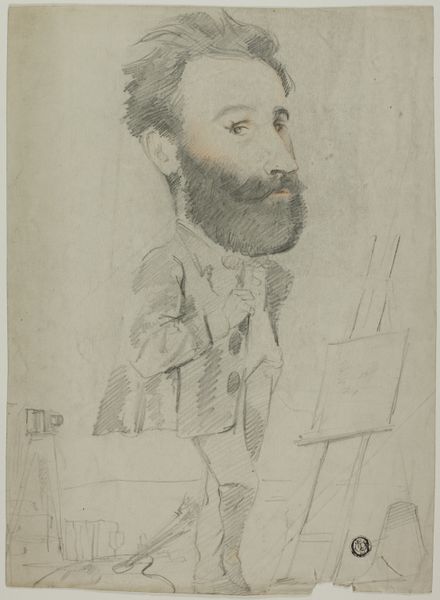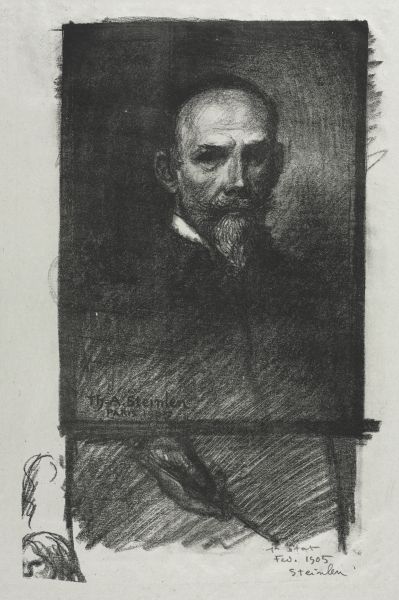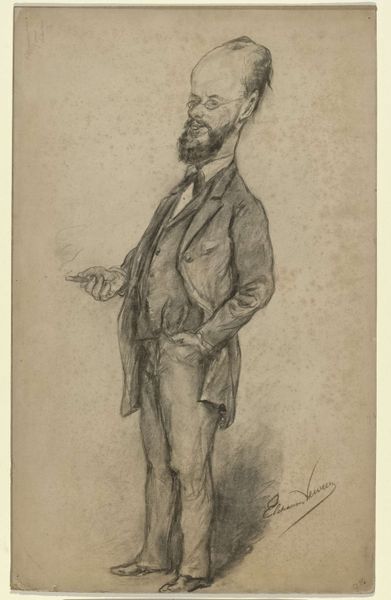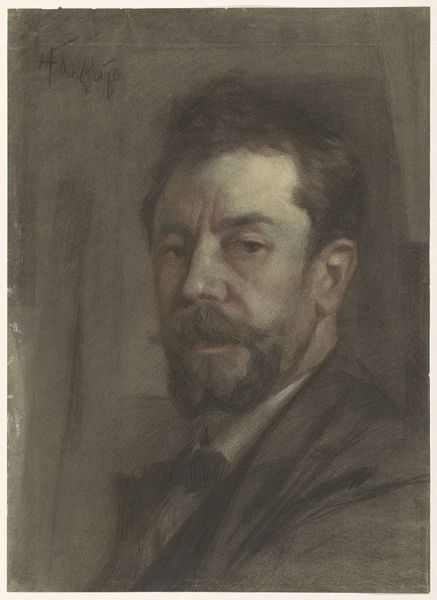
Dimensions: height 308 mm, width 221 mm
Copyright: Rijks Museum: Open Domain
August Allebé created this self-portrait using black and white chalk in 1873. Looking at the image, you can see Allebé in a contemplative pose, an embodiment of the Romantic era's emphasis on emotion and individualism. The portrait has a particular resonance as it reflects Allebé's complex position in society, straddling the line between artistic expression and societal expectations. His life and work occurred during a time of significant social change, which saw the rise of the middle class and shifts in the art world. Allebé navigates these changes through his artwork. His decision to create a self-portrait, rather than a historical or mythological scene, suggests a focus on individual experience and identity. Consider the historical and cultural context of the time. There were constraints of traditional portraiture and the demands of the art market, yet it also provided Allebé with a vehicle for self-expression. Think about the artist's personal experiences and beliefs, and how these may have influenced his artistic choices. The self-portrait allows Allebé to present himself on his own terms.
Comments
No comments
Be the first to comment and join the conversation on the ultimate creative platform.
